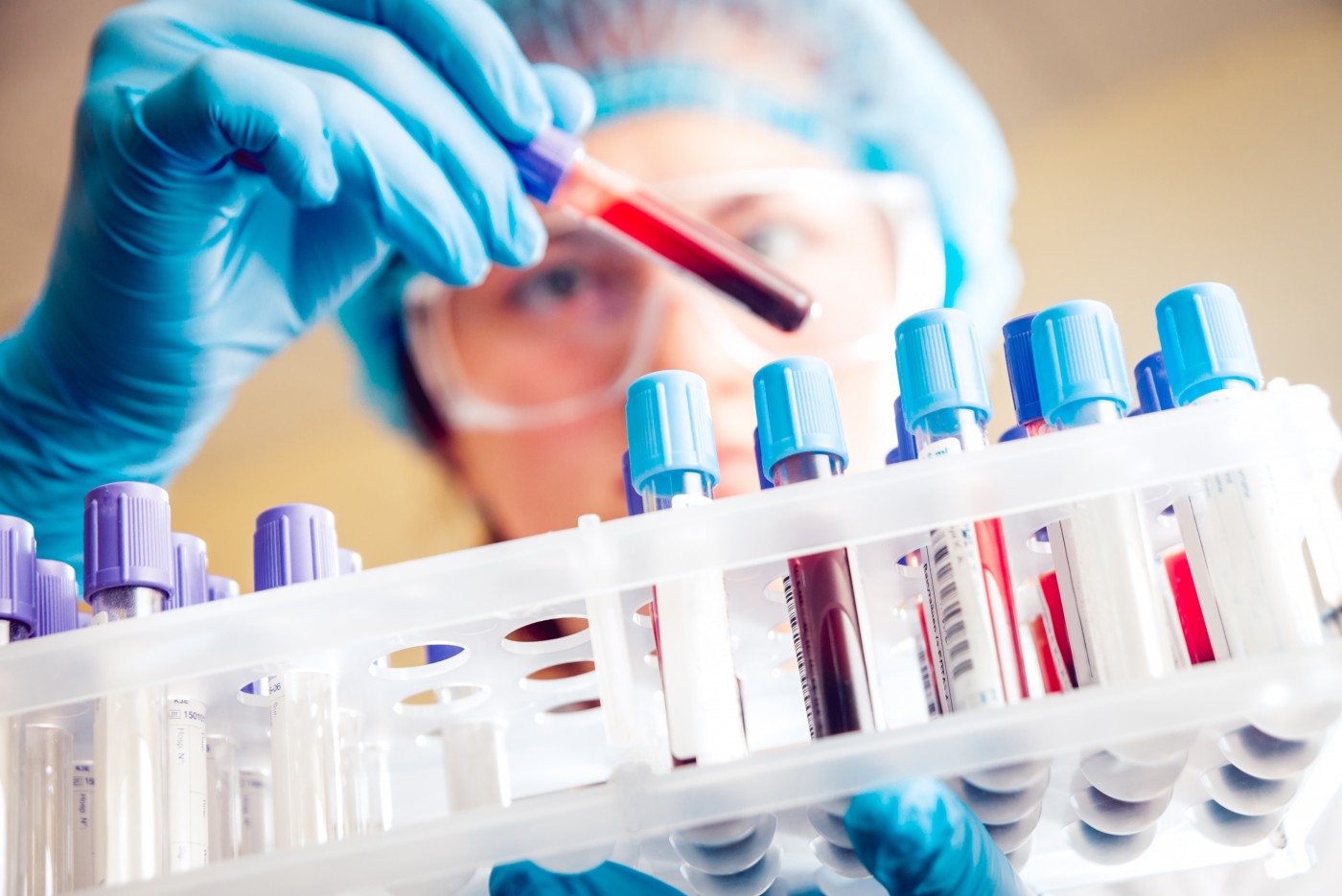Advanced Blood Sample Analysis Could Be Better Than Bone Marrow Biopsies, Study Shows

Genetic analysis of multiple myeloma DNA from two different sources present in blood samples provides researchers equally relevant cancer information as more invasive bone marrow biopsies, a study shows.
This advancement could enable more frequent follow-ups and better monitoring of cancer progression, treatment responses, and relapses with a less-invasive method like drawing a blood sample.
The study, “Whole-exome sequencing of cell-free DNA and circulating tumor cells in multiple myeloma,” was published in the journal Nature Communications.
In multiple myeloma, the gold standard method of diagnosing and tracking cancer progression is bone marrow biopsy. However, bone marrow biopsies are too invasive to be performed frequently. In response, researchers are working to find less-invasive methods that provide information that is of equivalent value as bone marrow samples.
Circulating tumor cells (CTCs) and circulating cell-free DNA (cfDNA) in blood samples are being investigated as blood biopsies due to their potential for delivering a genetic profile of several cancers, including myeloma, and for monitoring treatment responses and cancer relapses.
cfDNA are DNA fragments present in the bloodstream due to cell death. Normally, these fragments are cleaned up by specific immune cells, but the overproduction of cancer cells in cancer patients may leave more of their DNA behind. This is called circulating-tumor DNA (ctDNA).
ctDNA is estimated to account for about 0.01–1 percent of cfDNA in early-stage cancer and more than 40 percent for late-stage cancer. The detection of tumor-specific mutations in cfDNA has the potential to provide tumor-specific markers to help improve treatment decision-making.
While CTCs and cfDNA have shown individual potential for cancer identification and monitoring, it was unclear if they provide similar genetic information and how comparable they are to bone marrow biopsy.
To clarify this, researchers at the Dana-Farber Cancer Institute and the Broad Institute of MIT and Harvard compared results obtained from CTCs, cfDNA, and bone marrow biopsies from patients with multiple myeloma.
They used a two-step approach to analyze the blood biopsies. Software developed by the Broad Institute team first detected genetic alterations and estimated tumor DNA fraction on CTCs and cfDNA using a genetic test called ultra-low-pass whole genome sequencing. Samples with tumor DNA fraction of more than 10 percent were then selected for another large-scale genetic test called whole exome sequencing.
The analysis involved cfDNA from 107 patients and CTCs from 56 patients. Tumor DNA fractions from both sources were found to be associated with disease progression.
When comparing cfDNA and bone marrow data from nine patients, as well as cfDNA, CTCs, and bone marrow data from four patients, researchers found an 81-99 percent agreement between blood and bone marrow biopsies in terms of genetic alterations.
“Our discovery that cfDNA and CTC analyses agree with each other at the comprehensive level is an important finding, because this means that routine genetic profiling of patient tumors from blood would be feasible,” Irene Ghobrial, the study’s co-senior author, said in a press release.
CTCs and cfDNA also presented similar genetic changes, even though some mutations were exclusive of each of the sources, and others were undetected in the bone marrow.
These findings suggest that the approach may widen the genetic spectrum of a patient’s myeloma, which is crucial to making appropriate treatment decisions, especially given the increasing number of available myeloma therapies. Larger studies are needed to confirm the clinical potential of these blood biopsies.
“We believe it’s important to look broadly at a patient’s cancer genome and how it changes over time–to identify not only the known actionable mutations of today but also to discover new ones that will inform better and more effective treatments of tomorrow,” added study co-senior author Viktor Adalsteinsson.






